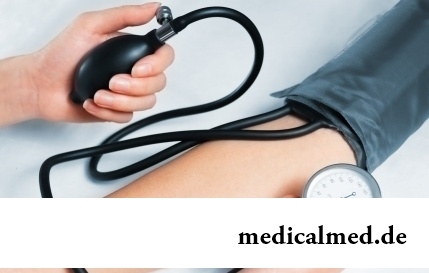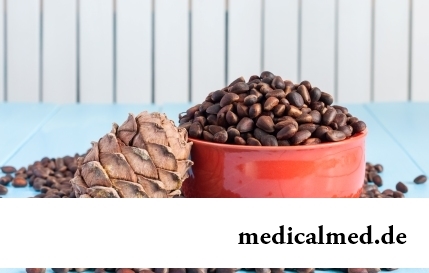





Verapamil
Application instruction:
 Verapamil – drug with antiarrhytmic, anti-anginal and anti-hypertensive action.
Verapamil – drug with antiarrhytmic, anti-anginal and anti-hypertensive action.
Form of release and structure
Verapamil is produced in the following dosage forms:
- Tablets, film coated (on 10 pieces in blisters, on 1 or 5 blisters in a cardboard pack);
- Solution for intravenous administration: colourless, transparent (in colourless glass ampoules on 2 ml, on 5 ampoules in blister strip packagings, on 2 or 10 packagings in a cardboard pack).
Is a part of 1 tablet:
- Active ingredient: a verapamil hydrochloride – 40 or 80 mg;
- Auxiliary components: disubstituted calcium phosphate, starch, butylhydroxyanisole, the purified talc, magnesium stearate, gelatin, methylparaben, a gidroksipropilmetiltsellyuloz, titanium dioxide, indigo carmine.
Is a part of 1 ampoule of injection solution:
- Active ingredient: a verapamil hydrochloride – 5 mg;
- Auxiliary components: sodium chloride – 17 mg, sodium hydroxide – 16,8 mg, monohydrate of citric acid – 42 mg, the concentrated Acidum hydrochloricum – 0,0054 ml, water for injections – to 2 ml.
Indications to use
Tablets
- Disturbances of a cordial rhythm, including Bouveret's supraventricular disease, blinking and an atrial flutter (takhiaritmichesky option), supraventricular premature ventricular contraction – for treatment and prevention;
- Unstable stenocardia (rest stenocardia), chronic stable stenocardia (angina of exertion), vasospastic stenocardia (alternative stenocardia, Printsmetal's stenocardia) – for treatment and prevention;
- Arterial hypertension – for treatment.
Injection solution
Verapamil in the form of injection solution is applied to stopping of attacks of a supraventricular Bouveret's disease, atrial premature ventricular contraction, paroxysms of trembling and atrial fibrillation.
Contraindications
Absolute:
- Chronic heart failure of IIB-III of a stage;
- Morganyi-Adams-Stokes's syndrome;
- Sinuatrial blockade;
- Sick sinus syndrome;
- Cardiogenic shock (except caused by arrhythmia) (for tablets);
- The expressed bradycardia (for tablets);
- WPW-syndrome (for tablets);
- Acute heart failure (for tablets);
- Atrioventricular block of II and III degrees (except patients with an artificial pacemaker) (for tablets);
- Arterial hypotension (for injection solution);
- Acute myocardial infarction (for injection solution);
- Stenosis of the mouth of an aorta (for injection solution);
- Digitalis intoxication (for injection solution);
- Ventricular tachycardia (for injection solution);
- Syndrome of Launa-Ganonga-Levina or WPW-syndrome in combination with trembling or fibrillation of auricles (excepting patients with a pacemaker) (for injection solution);
- Porphyria (for injection solution);
- Simultaneous therapy with intravenous administration of beta adrenoblockers;
- Age up to 18 years;
- Pregnancy and the period of a lactation (for injection solution);
- Hypersensitivity to drug components.
Relative (Verapamil should be applied with care in the presence of the following states / diseases):
- Atrioventricular block of the I degree;
- Bradycardia;
- The expressed functional disturbances of kidneys and a liver;
- Arterial hypotension with a systolic pressure below 100 mm hg (for tablets);
- Chronic heart failure of I and II degrees (for tablets) and I and IIA of degree (for injection solution);
- Concomitant use with beta adrenoblockers (for injection solution);
- Myocardial infarction with a left ventricular failure (for injection solution);
- Advanced age (for injection solution).
Route of administration and dosage
Tablets
Verapamil is accepted inside, washing down with a small amount of water, it is more preferable – in time or after meal.
The doctor establishes the mode of dosing and duration of therapy individually depending on a condition of the patient, severity and features of disease, and also efficiency of drug.
The initial adult single dose at treatment of arterial hypertension and for prevention of attacks of stenocardia, arrhythmia makes 40-80 mg, frequency rate of reception – 3-4 times a day. The single dose is increased in case of need to 120-160 mg (as much as possible – 480 mg a day).
At the expressed functional disturbances of a liver it is reasonable to begin therapy with the smallest doses (as much as possible – 120 mg a day).
Injection solution
Verapamil should be entered intravenously, slowly, for not less than 2 minutes, continuously controlling the electrocardiogram, heart rate and arterial pressure. At elderly patients for the purpose of decrease in risk of development of undesirable actions administration of solution needs to be carried out within, at least, 3 minutes.
When stopping paroxysmal disturbances of a cordial rhythm Verapamil is entered intravenously struyno on 2-4 ml of 0,25% of solution (5-10 mg), controlling the electrocardiogram and arterial pressure. In cases of lack of effect perhaps repeated introduction of the same dose of drug in 30 minutes. For cultivation of 2 ml of 0,25% of solution of Verapamil use 100-150 ml of 0,9% of solution of sodium chloride.
Side effects
Tablets
- Central nervous system: headache, dizziness; in rare instances – block, the increased nervous irritability, increased fatigue;
- Alimentary system: vomiting, nausea, locks; in some cases – tranzitorny increase in activity of hepatic transaminases in a blood plasma;
- Cardiovascular system: face reddening, AV blockade, the expressed bradycardia, arterial hypotension, emergence of symptoms of heart failure (at use of high doses of drug, in particular at predisposed patients);
- Allergic reactions: itch, skin rash;
- Others: peripheral hypostases.
Injection solution
- Alimentary system: nausea, increase in activity of hepatic transaminases and alkaline phosphatase;
- Central nervous system: increased fatigue, uneasiness, headache, dizziness, syncope, extrapyramidal disturbances, block, adynamy, depression, drowsiness;
- Cardiovascular system: the expressed bradycardia (it is not less than 50 beats per minute), the expressed lowering of arterial pressure, aggravation or development of heart failure, tachycardia; perhaps – development of stenocardia, up to a myocardial infarction (in particular at patients with crushing obstructive defeats of coronary arteries), arrhythmias (including trembling and ventricular fibrillation); at bystry administration of solution – an asystolia, an atrioventricular block of the III degree, a collapse;
- Allergic reactions: a dermahemia of the person, rash, a skin itch, a multiformny exudative erythema (including Stephens-Johnson's syndrome);
- Others: a fluid lungs, tranzitorny loss of sight against the background of the maximum concentration, asymptomatic thrombocytopenia, peripheral hypostases (including puffiness of anklebones, shins and feet).
Special instructions
During therapy it is necessary to control function of respiratory and cardiovascular system, level of electrolytes and glucose in blood, amount of the emitted urine and volume of the circulating blood.
At intravenous administration of Verapamil lengthening of an interval of PQ at concentration in a blood plasma is possible higher than 30 mg/ml.
It is not recommended to stop therapy suddenly.
Verapamil should be applied with care to drivers of vehicles and people whose profession is connected with the increased concentration of attention (because of reduction in the rate of reaction).
Medicinal interaction
At simultaneous use of Verapamil with some medicines there can be following effects:
- Antiarrhytmic means, beta adrenoblockers and inhalation anesthetics: strengthening of cardiotoxic effect (danger of development of an atrioventricular block, sharp reduction in the frequency of cordial reductions, development of heart failure, a sharp lowering of arterial pressure increases);
- Anti-hypertensive means and diuretics: strengthening of hypotensive effect of Verapamil;
- Digoxin: increase in level of concentration of digoxin in a blood plasma (for identification of an optimum dosage of drug and prevention of intoxication it is necessary to control its level in a blood plasma);
- Cimetidinum and ranitidine: increase in level of concentration of Verapamil in a blood plasma;
- Theophylline, Prazozinum, cyclosporine: increase in their concentration in a blood plasma;
- Muscle relaxants: strengthening of myorelaxation action;
- Rifampicin, phenobarbital: reduction of concentration of Verapamil in a blood plasma and weakening of its action;
- Acetylsalicylic acid: increase in probability of developing of bleedings;
- Quinidine: increase in level of concentration of quinidine in a blood plasma, strengthening of risk of lowering of arterial pressure, at a hypertrophic cardiomyopathy – development of the expressed arterial hypotension;
- Carbamazepine, lithium: increase in danger of development of neurotoxic effects.
Terms and storage conditions
To store in protected from light, the place, dry, unavailable to children, at a temperature up to 25 °C.
Period of validity – 3 years.
Name of drug
Price
Drugstore
Verapamil тбл п / about 40 mg No. 30, Alkaloid
47 rub.
 Network of the Moscow drugstores of IFC
Network of the Moscow drugstores of IFCVerapamil тбл п / about 80 mg No. 30, Alkaloid
52 rub.
 Network of the Moscow drugstores of IFC
Network of the Moscow drugstores of IFCThe educated person is less subject to brain diseases. Intellectual activity promotes formation of the additional fabric compensating sick.

You heard that laughter prolongs life? To establish longevity direct link with sincere fun to researchers yet not удалос...
Section: Articles about health
An eye of the person daily experiences considerable strain. The problem of preservation of sight is for many years directly connected with a question of supply of tissues of eye enough oxygen and nutrients. This task is carried out by small vessels – capillaries. For holes...
Section: Articles about health
What they, women? Beautiful, gentle, passionate and at the same time windy, gusty, and nervous. And what is stranger: have all these qualities of the woman at the same time. But here only the mood their time sharply changes on completely opposite: in the morning they laugh and joke, and in the evening cry or are irritated....
Section: Articles about health
The body of the person almost for 60% consists of water. It is so important for normal functioning of an organism that loss of all is ponut...
Section: Articles about health
Is told about advantage of domestic animals for development of the child much. But many parents nevertheless do not hurry to bring pets as are afraid that they can do harm to health of children. What troubles can really trap kids and how to make with...
Section: Articles about health
Summer in the heat. Many are going to spend vacation abroad. Travelers the tender seas, rest on beaches wait, for sightseeing, campaigns on natural and cultural reserves. But, unfortunately, on vacation also problems with health can wait for us. On a foreign trip it is possible to face also diseases which not only will spoil long-awaited issue, but also will force to be treated within long months after its termination. To be insured completely from troubles of it a sort...
Section: Articles about health
According to doctors, more than a half of men of 25-50 years suffer from frustration of the urinogenital sphere, but sees a doctor from them меньшинс...
Section: Articles about health
Statistically, in Russia about 34% of citizens smoke. Most of consumers of tobacco has problems with health sooner or later. Not only smokers, but also their relatives suffer. Besides, cigarettes are expensive, and need of their acquisition heavy bry...
Section: Articles about health
All are familiar with cold, and practically everyone believes that he has sufficient knowledge and experience that correctly to treat it. In practice most of people makes mistakes in attempts to get rid of rhinitis, and divides numerous delusions it....
Section: Articles about health
The way of life of people promptly changes from year to year: if about ten years ago the personal computer was not in each family...
Section: Articles about health
Life does not indulge the modern woman special emotional comfort and carelessness. The fatigue, troubles at work, misunderstanding in a family and various illnesses immediately affect a condition of hair and skin. And to look safe and attractive so хоч...
Section: Articles about health
All of us, unfortunately, should face flu nearly an every year. It would seem, so frequent disease has to be studied already up and down, and each person, at least once to them had (and the number of such people in our country aims at 100%), has to know the basic rules of its treatment. However as shows experience of doctors, there is no it, and often people, self-confidently thinking what is known as it is necessary to be treated, make mistakes....
Section: Articles about health
Practice of use of table salt in the therapeutic purposes contains not one century. Appl are considered especially effective...
Section: Articles about health
The brain of the person is studied not one hundred years, but the quantity of the riddles connected with this body increases rather, than decreases. Perhaps, numerous delusions concerning a structure and functioning of a brain, many are explained by it from...
Section: Articles about health
Stroke (acute disorder of cerebral circulation) – one of the most widespread neurologic diseases. Annually in the world more than 6 million people die of this illness. From the survived patients about 80% become disabled people, and nearly a third from them needs afterwards permanent care. In fact, the stroke creates a situation at which a part of cells of a brain loses blood access, loses an opportunity to receive oxygen and nutrients, and perishes. As a result of a razviv...
Section: Articles about health
Life of the modern woman is very difficult. Opportunities to realize itself are wide: it not only education and career, but also most differently...
Section: Articles about health
Statistically, at the address to doctors seven of each ten patients complain of a headache. Actually it is much more people who are periodically feeling unpleasant feelings such. Many people, apart from a headache the reason for serious fear...
Section: Articles about health
Each person supports all life a SARS about 200 times. The peak of incidence falls on cold season, but it is possible to get sick with a temperature and a pharyngalgia, and sometimes and very possibly, even during a heat. The reasons for development of catarrhal diseases there is a set: from the weakened immunity till an excess portion of ice cream....
Section: Articles about health
Extracorporal fertilization – one of the most modern methods of controlling with infertility. So far it already helped znach...
Section: Articles about health
History of use of an anesthesia during operations contains more than 160 years. Annually in the world hundreds of thousands of surgical interventions during which to patients the substances immersing them in a dream and saving from pain are entered are carried out. Using an anesthesia to these...
Section: Articles about health
The hysteromyoma is diagnosed more than at a third of women 35 years are more senior. This high-quality new growth which at early stages successfully resolves by means of medicines. It is necessary to resort to an operative measure only when patients too late address specialists, or therapeutic methods do not give the expected effect because of specific features of an organism. Besides, there is a large number of quite effective national...
Section: Articles about health
Traveling all over the world, many try to try the most exotic dishes of national cuisines. Exists even so-called died away...
Section: Articles about health
Bulimia and anorexia, are heavy deviations of a feeding behavior, become a cause of death of patients much more often than all other nervous breakdowns combined. In 60% of cases two illnesses accompany each other: patients feel horror before danger on...
Section: Articles about health
Any person who faced a disease knows that treatment costs expensive. It belongs also to consultations of qualified specialists, and to the diagnostic procedures which are not included in the list of obligatory medical services. The question of cost of medicines is not so unambiguous: almost each drug is produced several producers at once, and the price of medicine can differ many times. In such situation there is a sense to understand in what differ from each other original environments...
Section: Articles about health
Aging — natural and inevitable process. Over time our skin loses elasticity, on it saggings, a face form теря are formed...
Section: Articles about health
Cold, puffiness of a nose, itch, the watering eyes - characteristic symptoms of the allergic rhinitis resulting from hit of allergens (pollen, house dust, hair of animals, etc.) on a mucous membrane of a nose. Unpleasant feelings often deliver беспоко...
Section: Articles about health
All got used long ago that, having addressed the plastic surgeon, it is possible to modify natural parameters of a figure or to minimize the damages put to appearance with ruthless time. Many people (preferential women) worldwide annually decide on operations such. However there are also much more exotic interventions which are carried out seldom so far and cost expensive very much. We bring the story about the most unusual of them to your attention....
Section: Articles about health

